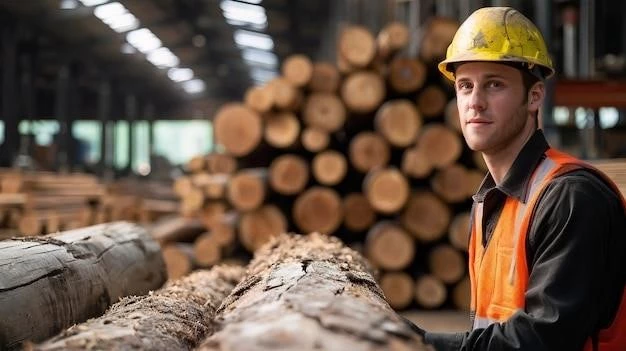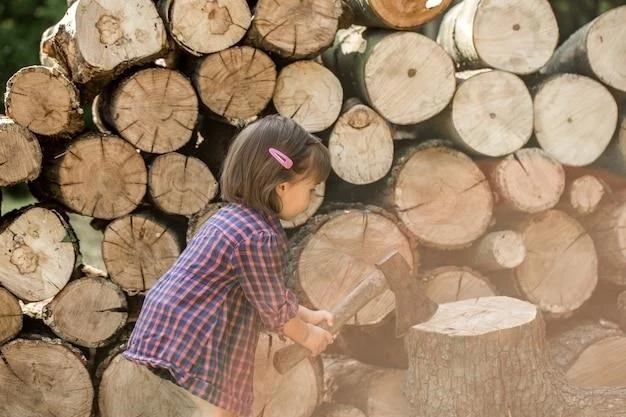My Life as a Logger: Facing the Daily Dangers of the Woods
For years‚ I’ve woken up before the sun‚ pulled on my steel-toe boots‚ and headed out into the crisp morning air. The woods have been my office‚ the towering trees my colleagues‚ and the rhythmic drone of the chainsaw my soundtrack. Being a logger is more than just a job; it’s a way of life. It’s honest‚ demanding‚ and deeply connected to nature. But it’s also a profession fraught with danger‚ a reality I’ve come to know all too well.

The Unforgiving Nature of the Logging Industry
The logging industry has a reputation‚ and it’s not for the faint of heart. It consistently ranks as one of the most dangerous occupations in the world‚ and for good reason. Every day‚ I face a myriad of hazards‚ each with the potential for serious injury or worse.
1. Falling Trees: A Constant Threat
The most obvious and perhaps the most significant risk in logging is falling trees. These giants can weigh tons‚ and when they come crashing down‚ the force is incredible. I’ve seen firsthand how quickly things can go wrong. I remember a time when I was working with a team felling a particularly large Douglas Fir. We had planned the cut carefully‚ but the wind shifted unexpectedly‚ sending the tree in a direction we hadn’t anticipated; Thankfully‚ we all reacted quickly and escaped unharmed‚ but it was a stark reminder of the ever-present danger.
2. Heavy Machinery: A Double-Edged Sword
While essential for our work‚ the heavy machinery we use daily presents its own set of hazards. Skidders‚ loaders‚ and feller bunchers are powerful machines‚ and even a small miscalculation can have devastating consequences. I’ve become meticulous about following safety protocols‚ inspecting equipment‚ and maintaining a safe distance from operating machinery. It’s not just about protecting myself but also ensuring the well-being of my fellow loggers.
3. Terrain Challenges: An Uneven Playing Field
Our “office” is far from predictable. We work on steep slopes‚ uneven ground‚ and in all weather conditions. This unpredictable terrain can lead to slips‚ trips‚ and falls‚ which are all too common in our line of work. I’ve learned to move with caution‚ always aware of my footing and potential obstacles. Proper footwear is non-negotiable‚ and I never hesitate to speak up if I feel a work area is unsafe.
4. The Weight of Fatigue: A Silent Enemy
Logging is physically demanding work. Long hours‚ heavy lifting‚ and the constant need for vigilance can take a toll on even the fittest individuals. Fatigue can cloud judgment and increase the likelihood of mistakes. I’ve learned to listen to my body‚ take breaks when needed‚ and prioritize rest. It’s not a sign of weakness but a recognition that our minds and bodies need to be sharp to work safely.

Navigating the Risks: A Logger’s Guide to Staying Safe
Over the years‚ I’ve learned that staying safe in the logging industry is a combination of experience‚ vigilance‚ and a healthy dose of respect for the inherent dangers. Here are some of the essential safety practices that have become second nature to me:
1. Personal Protective Equipment (PPE): My Second Skin
PPE is our first line of defense against the many hazards of logging. I never step foot in the woods without my hard hat‚ safety glasses‚ ear protection‚ cut-resistant chaps‚ and steel-toe boots. These aren’t just suggestions; they’re lifesavers.
2. Communication is Key: Breaking the Silence
In the woods‚ clear communication can mean the difference between a close call and a catastrophe. Before we start any task‚ we have a safety briefing to discuss the plan‚ potential hazards‚ and communication signals. I’ve learned that speaking up if I see something unsafe is crucial‚ even if it means delaying the job.
3. Training and Certification: Knowledge is Power
The logging industry is continually evolving‚ with new equipment‚ techniques‚ and safety protocols. I make it a priority to stay current with the latest industry standards by participating in regular training programs and maintaining my certifications. This ongoing education helps me to identify and mitigate risks effectively.
4. Maintaining a Culture of Safety: We’re in This Together
Safety is not a solo endeavor in logging; it’s a team effort. We look out for one another‚ offer reminders‚ and encourage safe practices. We celebrate close calls as learning opportunities and work together to prevent them from happening again.
A Life on the Edge‚ A Life Well Lived
Logging is not a job for everyone. It’s challenging‚ demanding‚ and‚ yes‚ dangerous. But for me‚ it’s more than just a paycheck; it’s a passion. It’s the satisfaction of working with my hands‚ the camaraderie of my crew‚ and the deep connection I feel to the natural world. I know the risks‚ I respect them‚ and I take every precaution to mitigate them. Because at the end of the day‚ I want to return home safe‚ just like every other logger out there. We work hard‚ we face our fears‚ and we keep the timber rolling‚ all while striving to ensure that everyone goes home safely.










